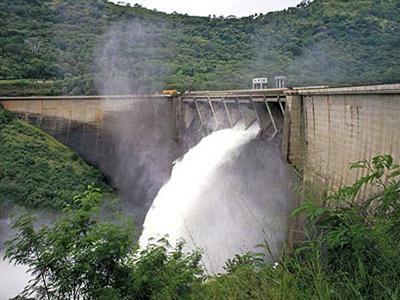Sri Lanka’s hydropower reservoirs boosted their storage 97 percent which is enough to generate 890.2 million units of electricity (GigaWatt hours) in less than two weeks, from torrential rains that hit the country in mid-May generating floods and landslides.
Storage at hydro power reservoirs were only 540 GWh in the morning of May 12, 2016 which was 35 percent of the total water the state-run Ceylon Electricity Board (CEB) can store.
The rains came to Sri Lanka as the full force of tropical cyclone Roanu hit Bangladesh, before the usual May to August main monsoon fills reservoirs depleted during the dry season in the first quarter of the year.
Storage rose as the power utility ramped up hydro power generation. In the 12 days to May 23, the CEB generated 83.9 GWh of energy from its hydro plants, data from the power regulator showed.
In the 12 days to May 23, 129 GWh of energy was generated, while collecting more water at reservoirs.
In the Mahaweli River system, the Victoria dam boosted its storage from 146.7 GWh to 350.9 GWh, preventing major floods in the lower reaches of the river. It is now 80 percent full.
Kotmale on another tributary of the Mahaweli system boosted storage to 119.2 GWh from 59.1GWh. It is now 83 percent full.
Parts of Colombo, which is at the bottom of the Kelani River however were flooded as water flowed down adding to local rainfall. The Kelani River system does not have very large storage reservoirs.
Storage at Maussakelle Reservoir, which is high up in the river system, went up from 53.9 GWh to 140 GWh. Castlereigh also captured water boosting storage to 81.7 GWh from 30 GWh and it is now 86 percent full.
Storage measured in Watthours may not correspond to exact volumes of water as the head or the gap in elevation between the reservoir and the turbine varies.
Broadlands hydro power station, a run-of-the-river plant which is now being built in Kitulgala in the Kelani River system also will not have storage to protect Colombo from floods.
Another large population centre in the Western coast, Kaluthara is also exposed to floods, because environmentalists prevented a large reservoir from being built in Kukule River.
The expanded storage is worth about 7.0 billion rupees at the average sale price of 15.94 rupees per unit of electricity not counting the 10 percent system losses at distribution or the extra 6 to 7 GWh hours of energy generated each day during the rains.
Average daily hydro generation went up from 6.9 GWh a day in the first 12 days of May to 13.1 GWh from in the next 11 days.






















